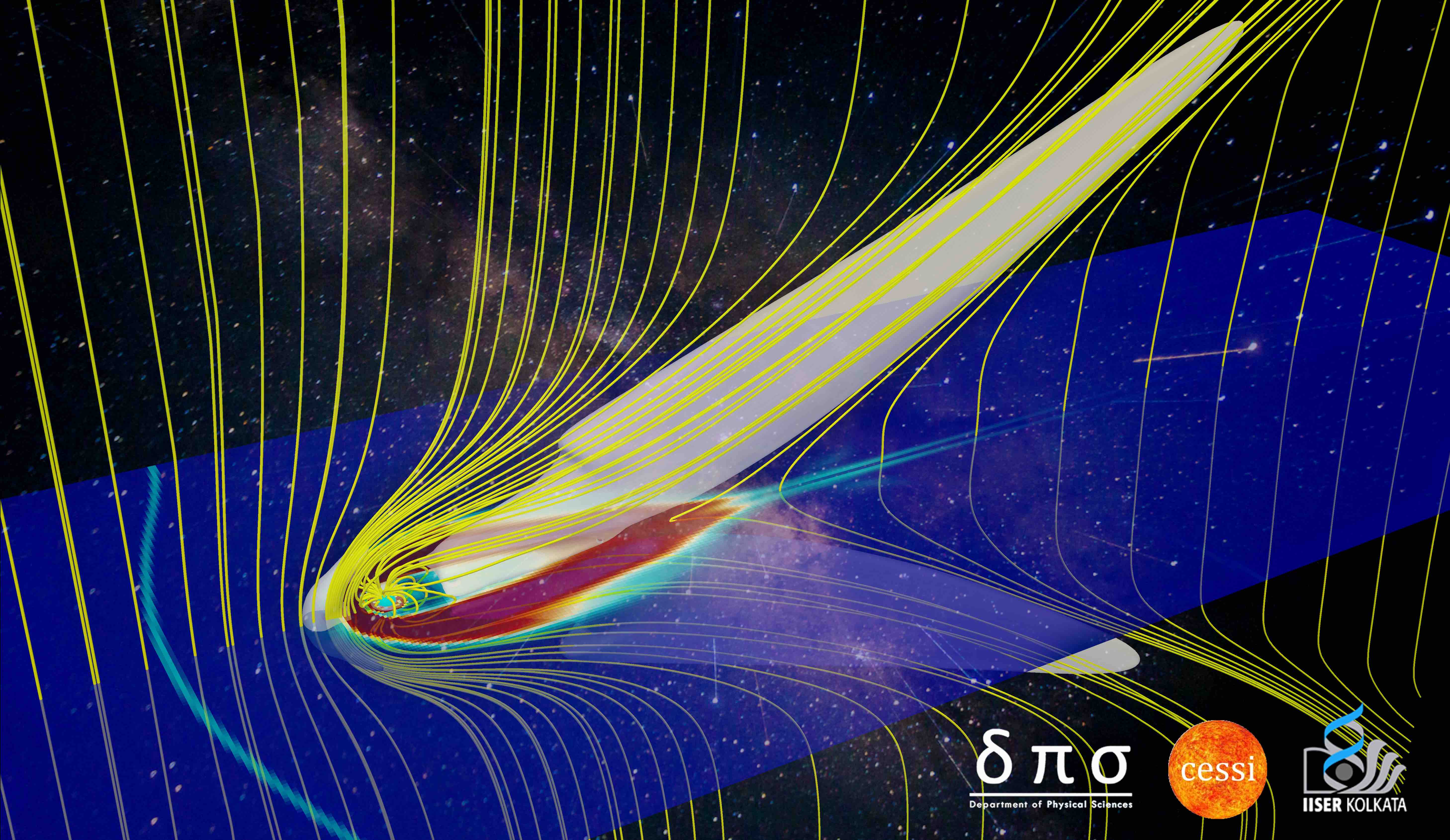
A Surprising Link between Cosmic Magnetism and Life
Exploration of planets in our own solar system and the discovery of more than 5000 exoplanets has the scientific community excited about the possibility of life beyond Earth. The possibility of life and the ultimate fate of planets such as the Earth are influenced by diverse factors including the nature of the stars they orbit. The strength of the invisible magnetic field - known as the magnetosphere - that surrounds a planet, as well as the strength of the magnetic field of its host star, which for us, is the Sun, have a surprisingly important role on this context, a new study from Department of Physical Sciences and the Center of Excellence in Space Sciences India finds.
In the study published in the Astrophysical Journal, PhD student Sakshi Gupta, Research Scientist Arnab Basak and Prof. Dibyendu Nandi present computer simulations exploring the interplay of cosmic magnetic fields that can result in the loss of a planet's atmospheres and their ability to host life. They go on to establish a mathematical equation which relates atmospheric mass loss rate to the relative strengths of stellar and planetary magnetic fields. Their findings are expected to aid in the identification of habitable star-exoplanet systems and catalyse observational efforts for measuring exoplanetary magnetic fields.
Reference: Gupta, S., Basak, A. and Nandy, D. 2023, “Impact of Changing Stellar and Planetary Magnetic Fields on (Exo)planetary Environments and Atmospheric Mass Loss”, Astrophysical Journal, Volume 953, Page 70
Journal: https://iopscience.iop.org/article/10.3847/1538-4357/acd93b
Arxiv: https://arxiv.org/abs/2303.04770
#Research Highlight
Posted on: August 5th, 2023

